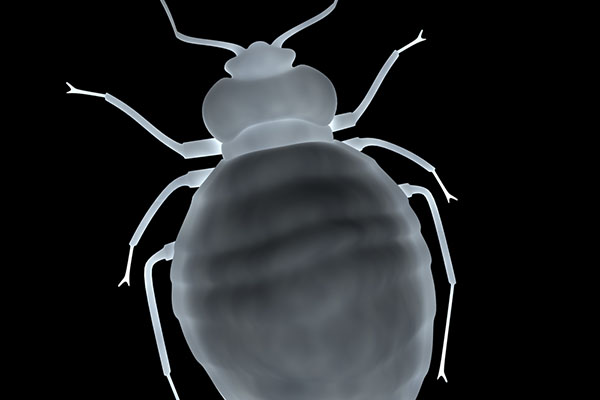While bed bug and flea bites may look similar, there are ways to tell them apart. Discover how to spot the difference and tell if it’s a bed bug or fleas

Regardless of whether you're dealing with bed bugs or fleas, you want them gone from your home. Now. But before you drive yourself crazy scratching, it's important to know which of the two nearly invisible arthropods you're dealing with. Treatments are necessary in both cases. However, depending on whether you have bed bugs or fleas, the most effective treatment will differ.
What is the difference between bed bugs and fleas?
While both require a warm-blooded host to provide blood meals, fleas tend to prefer feeding on hairy or furry animals such as cats and dogs. Bed bugs prefer feeding on your family.
To this end, cats, dogs and other animals (including outdoor wildlife) are generally associated with bringing fleas into the home, as opposed to bed bugs, which are generally brought in by people.
While fleas can live several months without a host in the pupa stage, adult fleas can only live about two weeks. Adult bed bugs can survive up to a year between feedings.
One flea can lay between 150 and 300 eggs every week. One bed bug can lay 200 in a lifetime (approximately 10 months to one year).
Bed bugs do not fly or jump. They have to crawl across your bed to feed. Fleas can jump almost 200 times their body length: 13 inches. This helps them transfer between hosts and "hitch rides" to travel to new sources of food (i.e., you and your family).
While bed bugs have not been discovered to pass on human pathogens, fleas have the ability to spread diseases such as typhus, plague and cat-scratch fever.
How can you tell bed bugs and fleas apart?
If you've captured one of these little assailants, immobilize the pest with a piece of clear tape. This will ensure it doesn't escape to bite again while also allowing you to examine the bug before showing it to your professional pest control experts. Here's how to tell if you've caught bed bugs or fleas:
- Bed bugs are reddish-brown, flat and seed-shaped. They range from 1.5 mm to 5 mm long.
- Fleas are also reddish-brown but have a more oval shape that appears skinnier and longer, rather than flatter. Fleas are also generally smaller, ranging in length from 1.5 mm to 3.3 mm.
- Bed bugs are nocturnal, and if you do see them, they are likely to be digesting meals on the piping of your mattress, in and around the bed frame or box spring, along the baseboards and creeping around in other well-hidden cracks and crevices.
- Fleas are also nocturnal parasites but are more likely to be found clinging to your pets, making themselves at home in animal sleeping areas or lurking around in your upholstery or carpeting, waiting to hop on for a bite.
What bit me - bed bugs or fleas?
If you're scratching at red marks on your body, you likely already have a bed bug infestation. If you have children and pets, check for signs of bites on them as well. Here are a few things that will help you figure out whether you have fleas or bed bugs, although it is important to remember that bite marks depend on the person and can be very situational:
- Flea bites resemble a cluster of mosquito bites. They are usually randomly placed and often appear as dots with a dark red center from the single puncture bite of the flea's specially built mouth, allowing it to suck blood.
- Bed bug bites appear as raised, flat red welts due to an allergic reaction to the anesthesia and anticoagulants found in the bug's saliva. Bed bug bites often appear in a straight row or line, consisting of three or four bites, though this is not always the case.
- A flea wheal (red bump) becomes swollen less than an hour after the bite. It starts to itch immediately and persistently. The bite can turn into an open sore or blister in one to two days.
- Bed bug bites can take a few days or even a week to show up. They gradually begin to itch more as well, since the anesthetic from their saliva starts to wear off.
- Bed bugs come out for blood meals every seven to 10 days as you sleep. Adult female fleas will feed numerous times, day and night - often for hours on end - if you let them.
Whether you have bed bugs or fleas, there's only one true solution: kill them now. Call Terminix® at the first sign of intrusion; even one bloodthirsty biter can take over your family's home.

